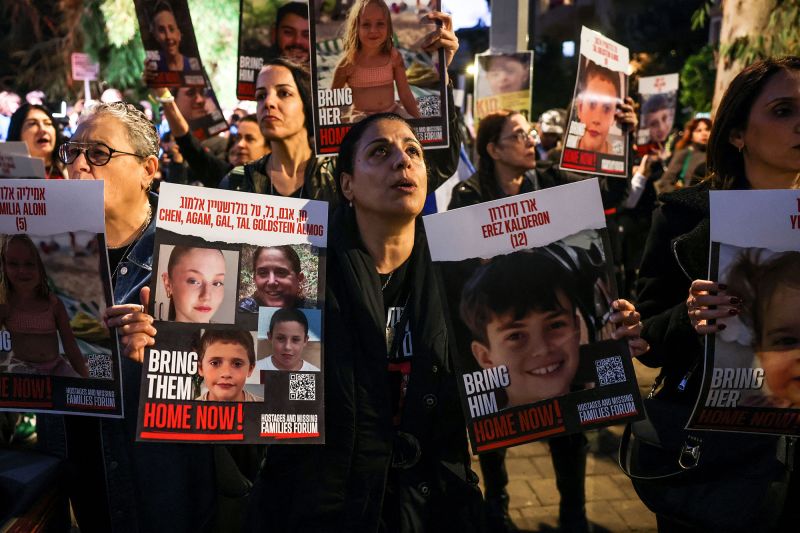
After the release of women and children held hostage by Hamas, the focus will turn to other groups held in the Gaza Strip, where negotiations for their release are expected to be difficult, the sources said.
Women and children are the first priority to be freed, which, if successful, will leave behind the remains of men, Israeli soldiers and those killed – either the bodies taken to Gaza on October 7 or those killed later.
236 hostages are believed to be held in Gaza. The 50 people expected to be released in the first phase are Israeli women and children, some of them non-Israelis.
A source familiar with the negotiations said US and Israeli officials see elderly men as the next category of people most likely to leave Gaza, followed by foreign nationals.
Both female and male soldiers found it difficult to negotiate outside of Gaza, the source added. In addition, the parties should also work to recover the bodies of those killed believed to be held by Hamas.
Negotiations for those categories are yet to begin in earnest, the source said.
As a result of the remaining hostage crisis, another source familiar with the discussions confirmed that the others were not part of the immediate conversations and were therefore on a separate path.
Another complicating factor in the case of many of those who remain is that they are not in Hamas custody, but with other groups and individuals.

Israeli soldiers held hostage could give Hamas great leverage in negotiations. In 2011, Israeli soldier Gilad Shalit was exchanged for more than 1,000 Palestinian prisoners after years of negotiations.
Following mandatory Israeli military service for both men and women, most Israelis become reservists, and according to a person familiar with the negotiations, Hamas originally wanted to consider female hostages under the age of 45 as soldiers.
Israel refused, and both sides agreed that only women in uniform when abducted would be considered soldiers, another source familiar with the discussions said.
In addition to the Israelis, there are also nationals abducted from other countries such as Thailand and Nepal, countries with ties to Qatar because Qatari mediators have key ties to Hamas, according to a person familiar with the discussions.
Israel’s military released security video from Gaza’s Al Shifa hospital that showed Hamas fighters bringing a mother and a Nepalese hostage to the hospital, one of them bleeding on a stretcher.